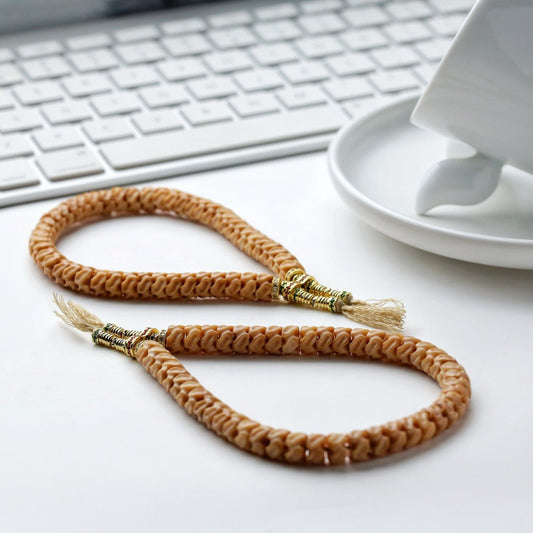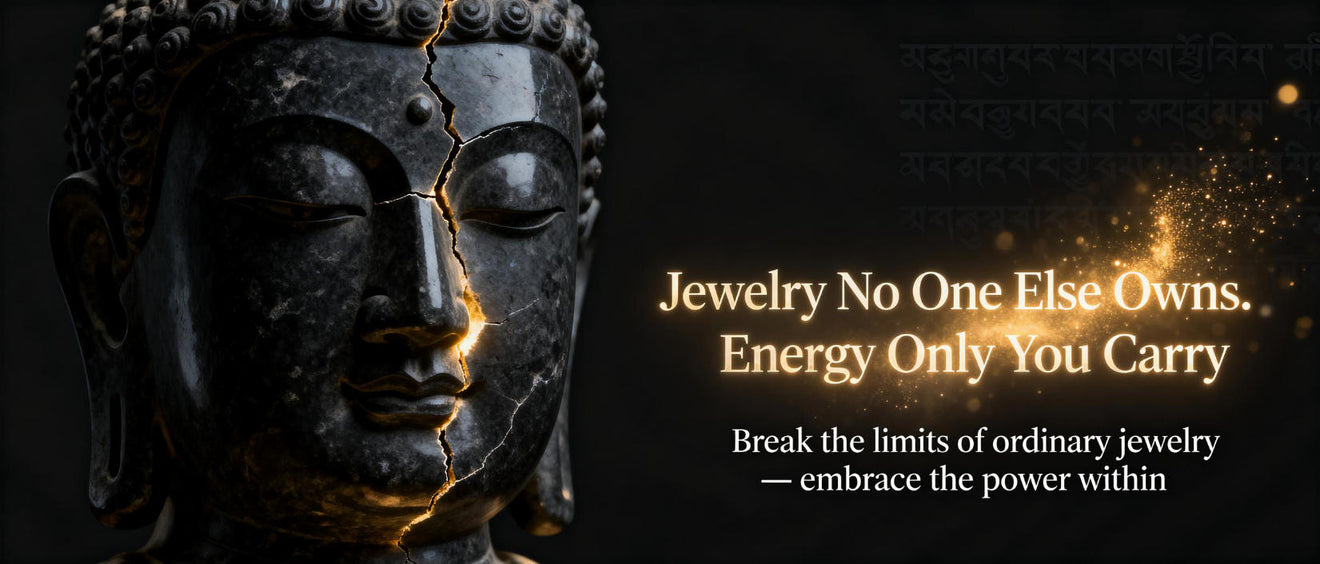
Amid the sophisticated tapestry among Tibetan sacred practices appear two valuable masterpieces: the thangka and the bodhi bead. Separately, in personalized means, provide access to spiritual knowledge. The thangka, a detailed mural, displays revered icons, sacred graphics, or ancient stories, offering meditation guidance.
Yet, the bodhi bead, often crafted from semiprecious minerals, hardwood, grains, or bony material, is a tangible reminder of Buddha's epiphany under the bodhi tree. Clutching the beads in contemplation anchors consciousness.
- As a pair, the thangka and the bodhi bead embody the fusion of creativity and faith. They offer a tangible link to the age-old knowledge of Tibetan Buddhism.
Stories Told by Camel Skeletons
Amidst long-forgotten periods, old treasures whisper tales of a world long elapsed. These are not precious objects in forgotten empires, but unpretentious camel bones inscribed with figures that enclose the mysteries of a bygone cycle. Every fragment holds the echo in a life lived, a journey pursued, and a connection to the hallowed wisdom which encloses us all.
- They
- Artifacts
- Serve
Exploring the Mystical World of Thangka Art
Tangkas are luminous paintings on canvas, meticulously crafted by Tibetan artists to depict sacred figures and scenes from Buddhist writings. Each detail within a thangka is laden with relevance, forming a complex tapestry of visual narratives that guide the viewer on a inner journey. The tints used in thangkas are not merely aesthetic choices but carry core connotations, symbolizing different aspects of the Buddhist teachings. From the stoic figures to the intricate layouts, thangkas offer a portal into the rich world of Tibetan Buddhism, inviting us to ponder upon its guidance.
- Conventional thangka art often depicts key Buddhist figures such as Buddha Shakyamuni, Bodhisattvas like Avalokiteshvara and Manjushri, and enlightened beings from various traditions of Tibetan Buddhism.
- Through these representations lies a wealth of discernment that can be comprehended by those who study the symbolic language of thangkas.
Path to the Buddha's Path to Enlightenment: Embodied in Beads and Bone
Upon the winding course to salvation, the Buddha exercised artifacts imbued with profound importance. Entire bead and piece held within them the nature of his enlightenment, offering glimpses into the unfolding of reality. With their profile, the Buddha articulated profound knowledges that overcome the realm of prosaic perception.
From specific sacred beads, crafted from unique materials, dispersed vibrations that resonated with the deepest powers within. The substance of a life form, meticulously transformed into amulets, served as tangible reminders of the impermanence innate to all realities.
Thangkas: Windows into Himalayan Spirituality
Thangkas luminous paintings on cloth serve as potent representations of Himalayan spirituality. These intricate works of art, meticulously created with detailed brushstrokes, depict a vast array upon Buddhist deities, mandalas, and scenes from ancient scriptures. Each thangka is a visual guide for meditation and contemplation, offering insight into the multifaceted teachings of Buddhism.
- They are often used in ritual ceremonies for
- transcending states of spiritual clarity.
- Thangkas present not merely decorative elements but rather portals into the rich and spellbinding world of Himalayan spiritual traditions.
The Allure of Bodhi Beads: Exploring Mindfulness and Compassion
Each pearl on a bodhi bead mala whispers tales of ancient wisdom, guiding us on a odyssey through the tranquil waters of mindfulness. As we clutch these intricately created beads, our fingers trace the contours of unique one, anchoring our focus in the present moment. The gentle heft of the beads against our palms serves as a tangible reminder to take in air, fostering a sense of composure.
- As each bead that passes between our fingers, we develop compassion, extending it first to ourselves and then outward to the world.
- Eastern religions teaches us that mindfulness is a skill that requires patience and persistence.
Via the rhythmic repetition of mantra or simply the mindful enumerating of the beads, we emancipate from the relentless chatter of the mind.
The practice applying bodhi beads is a refined invitation to reconnect our connection with ourselves and the world around us.
The Power of Intention: Crafting a Camel Bone Bracelet for Spiritual Growth
Will serves as a dynamic impulse in our lives, shaping our experiences and guiding us towards our predestined way. When we combine this intention with the time-honored techniques of crafting a camel bone bracelet, we create a potent synergy that can amplify our spiritual growth.Camel bone carries profound symbolism, representing endurance. Its natural beauty and rustic charm serve as a constant reminder of the inherent power within each of us.Through mindful selection of bones, instill intentions into the creation. With every knot or link, we incorporate our hopes, dreams, and aspirations for spiritual evolution. This act of creation becomes a contemplative exercise, aligning us with our inner wisdom and guiding us on a expedition of realization.- Consider the colors and patterns within the camel bone to reflect your intentions.
- Visualize your desires as you work, knotting them into the bracelet's structure.
- Expose it to elements to empower its sacred presence.
Interpreting Camel Bone Within Buddhist Contexts
In the rich tapestry within Buddhist tradition, artifacts often hold profound symbolic meaning. Across these varied objects, camel bone stands out as a exceptional and engaging element. Across history, this material has been incorporated in the crafting of various Buddhist artifacts, each imbued with specific meanings.
- Perceived as a symbol of resilience and strength due to the camel's ability to persist in harsh environments, camel bone often reflects spiritual fortitude.
- Likewise, the color and texture against camel bone are believed as some to hold auspicious connotations, signifying purity and serenity.
As a result, camel bone has become a prized part of Buddhist legacy, serving as a tangible bond to the profound teachings contained in this ancient faith.
Thangka Panels: Visual Sacred Lore
Within the ethereal realm of Tibetan Buddhism, Thangka paintings emerge as sacred portals to enlightenment. These exceptional works, meticulously crafted by skilled artists known as thangkapa, depict a myriad including vibrant deities, celestial beings, and mythical creatures. Each brushstroke imparts profound spiritual significance, narrating ancient tales and philosophical ideas.
- Spanning a vast group of Buddhist iconography, Thangkas serve as both devotional objects and instructional tools. Zealous practitioners gaze upon these paintings during rituals and meditations, seeking to develop spiritual wisdom.
- Ornately decorated with intricate details and vibrant hues, Thangkas are considered windows into the divine. Every single painting acts as a symbolic representation of the Avatar's teachings and the path to liberation.
Through their forceful imagery and symbolism, Thangka paintings offer a glimpse into the rich philosophical traditions of Tibet. They are a testament to the enduring artistry of Tibetan art and its profound ability to motivate.
Embracing the Duality: Thangkas and the Cycle of Life and Death
Thangkas, these vibrant woven scrolls from Tibet, offer a profound reflection on the transient nature of existence. Each intricate rendering depicts deities and beings engaged in the developing process of life and death, a array of birth, growth, impermanence, and renaissance. The artists skillfully blend these concepts within the thangka's domain, highlighting the linkage of all things. Through vivid symbols, they invite us to ponder on our own being. The cycle circulates, a tempo of coming and going, emphasizing the preciousness of each moment. By embracing this duality, thangkas teach us to appreciate camel bone bracelet the beauty in both life's joys and sorrows.Lines of Commitment: The Significance of Bracelets in Buddhist Practice
In the intricate tapestry of Buddhist practice, seemingly basic objects often hold profound meaning. Among these are bracelets, which serve as tangible markers of devotion and commitment to the practice of Buddha. Worn on the wrist, a bracelet acts as a constant reminder of one's aspirations and aspirations. It can represent the impermanence of life, urging practitioners to remain rooted in the present moment. Some bracelets may possess sacred drawings, such as mantras or the names of Buddhas, which are perceived to generate positive energy and guard. Others frequently are made from ingredients with spiritual significance, like sandalwood or lotus seeds, boosting the bracelet's energy. Ultimately, the significance of a Buddhist bracelet extends far beyond its physical form. It becomes a powerful tool for contemplation, a reminder to live in harmony with the teachings of Buddha, and a embodiment of one's unwavering allegiance.